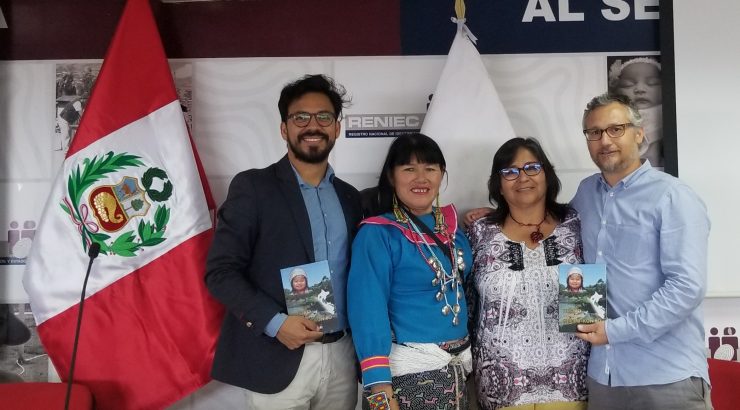New study will allow the Shipibo-Konibo people to officially register with traditional proper names
March 14, 2019
It has been estimated that up to 45% of Peru’s ca. 33 million people is Amerindian. Almost 50 different indigenous groups, speaking their own languages, inhabit the country’s Andean and Amazonian regions. Until recently it was almost impossible for Native parents to officially register their children using proper names in their own languages, either because public officials found them “strange” or simply did not know how to spell them.
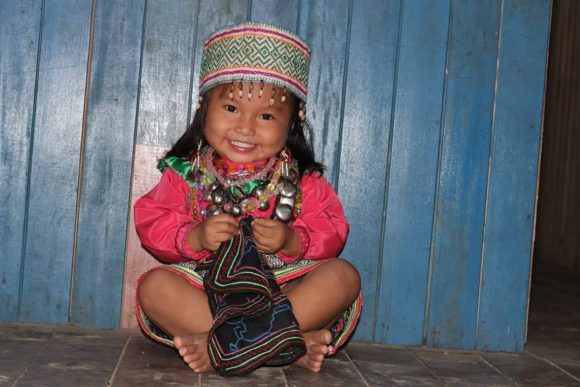
Fortunately, this situation is changing thanks to a new policy implemented by Peru’s National Registry of Identification and Civil Status (RENIEC after its Spanish initials). This governmental body maintains records of births, marriages, deaths, and suffrage eligibility. With the collaboration of experts in the various languages and cultures RENIEC is producing a collection of studies that investigate these unique onomastic traditions and provide practical recommendations that will allow government officials register members of Native groups using their own proper names.
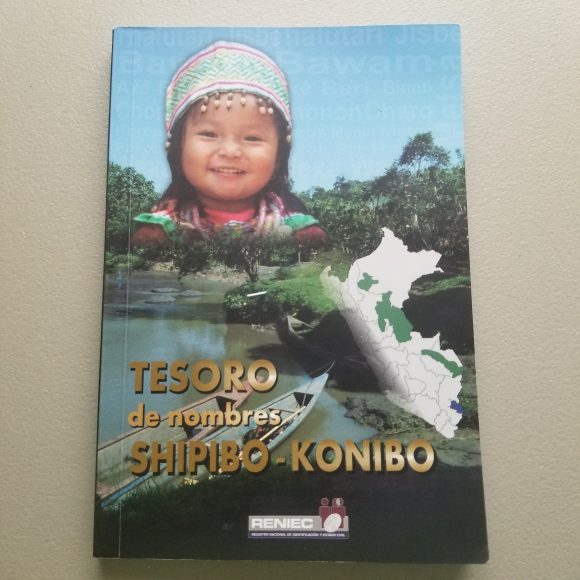 Dr. Pilar Valenzuela, Professor in the Department of World Languages & Cultures and expert in Amazonian languages, recently authored Tesoro de Nombres Shipibo-Konibo. According to her findings, the Shipibo-Konibo people possess a system of almost 8,000 janekon ‘true names.’ These anthroponyms are all compound, the first components being shared by men and women while the second components are gender specific. The study of Shipibo-Konibo onomastics provides further evidence of the prior social organization in patrilineal clans. In addition, it is not uncommon to name a grandchild after a chaikoni. The chaikoni are invisible people with whom the ancestors of the Shipibo-Konibo lived in the times of the Inka. They appear in the ayahuasca visions, may take a Shipibo-Konibo wife or husband and procreate children who are also invisible.
Dr. Pilar Valenzuela, Professor in the Department of World Languages & Cultures and expert in Amazonian languages, recently authored Tesoro de Nombres Shipibo-Konibo. According to her findings, the Shipibo-Konibo people possess a system of almost 8,000 janekon ‘true names.’ These anthroponyms are all compound, the first components being shared by men and women while the second components are gender specific. The study of Shipibo-Konibo onomastics provides further evidence of the prior social organization in patrilineal clans. In addition, it is not uncommon to name a grandchild after a chaikoni. The chaikoni are invisible people with whom the ancestors of the Shipibo-Konibo lived in the times of the Inka. They appear in the ayahuasca visions, may take a Shipibo-Konibo wife or husband and procreate children who are also invisible.
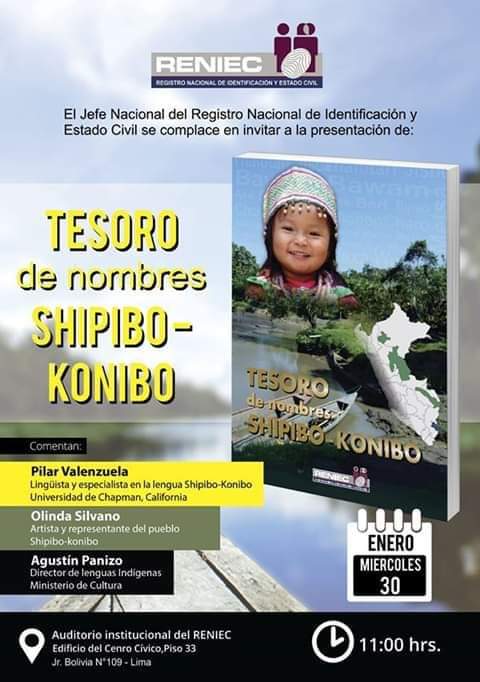 The Tesoro de Nombres Shipibo-Konibo was presented on January 30th at RENIEC’s main headquarters in the capital city of Lima. A second presentation, organized by RENIEC and indigenous organizations, will take place in early April in the Amazonian city of Pucallpa, where the largest percentage of Shipibo-Konibo population live.
The Tesoro de Nombres Shipibo-Konibo was presented on January 30th at RENIEC’s main headquarters in the capital city of Lima. A second presentation, organized by RENIEC and indigenous organizations, will take place in early April in the Amazonian city of Pucallpa, where the largest percentage of Shipibo-Konibo population live.
These efforts will help legitimize Shipibo-Konibo true names in the context of the Peruvian State thus complying with indigenous peoples’ rights to maintain their own identities, names, and languages.
Some Shipibo-Konibo ‘True Names’ and their approximate translation:
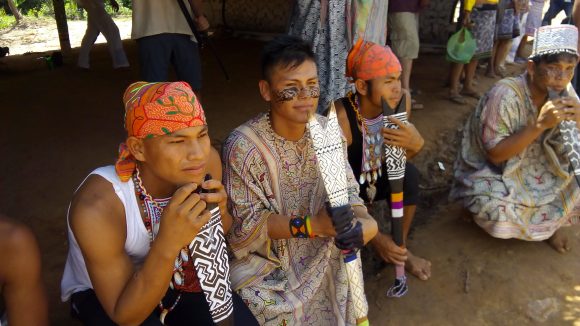 MEN
MEN
Kesten Yoi ‘Loud Word’
Inon Sanken ‘Elegant one among the Jaguars’
Neten Niwe ‘Breath of the World’
WOMEN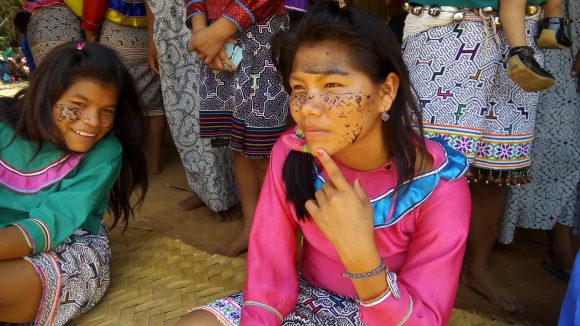
Inin Rama ‘Fragant Now’
Isá Rabi ‘Proud Bird’
Ronin Biri ‘Shining Anaconda’
